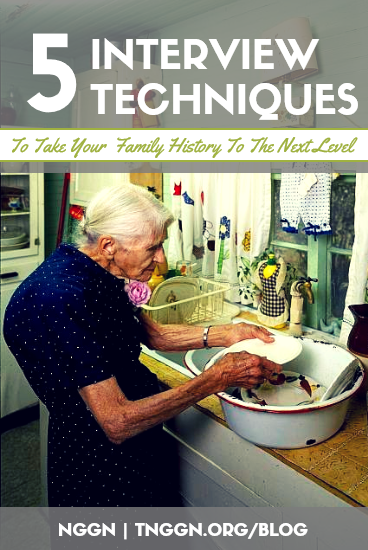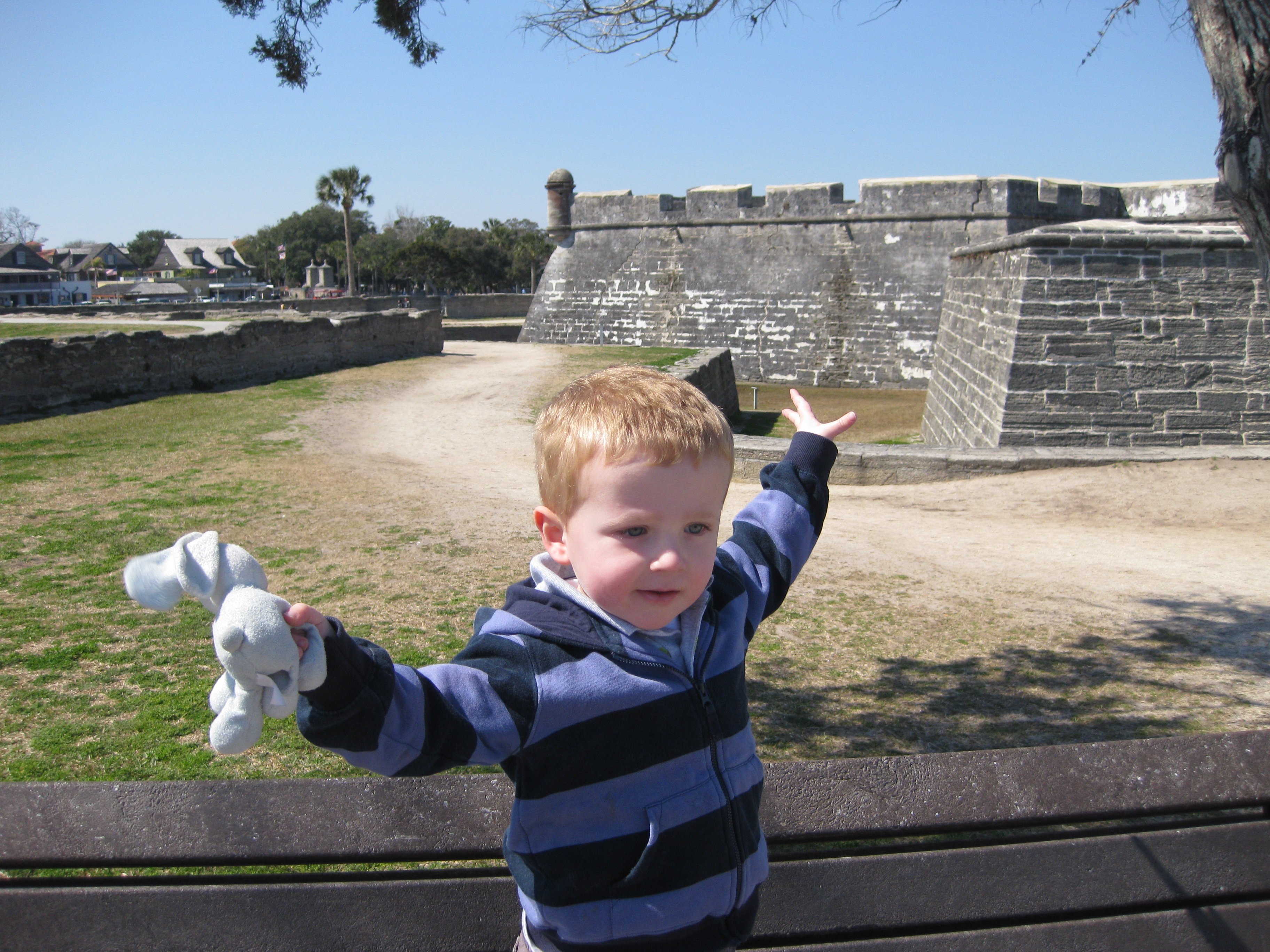Category: Guest Blogger
5 Interview Techniques to Take Your Family History to the Next Level
June 15, 2015
You probably already know that conducting an interview with a family member can help to paint a more complete picture of your family history. What you may not know is some of the techniques that the pros use to make sure that the interview is productive and results in a useful addition to available historical records. Here are my top five suggestions to help you make the most of your interview:

1. Preparation is key. It can be tempting, especially if the interviewee is someone you know well, to simply show up and chat over cookies. While that can be lovely, if you want a fruitful interview, it helps to be a little more formal in your technique. By preparing questions in advance and researching the places, time periods, and events that that person may have experienced, you in essence create a roadmap to follow. It also allows you to try to constrain the time of your interview and to decide if you might need more than one session. The ideal length for an interview is between forty-five minutes and an hour and a half.
2. Think of yourself as a tour guide. A tour guide wants visitors to enjoy their experience, lingering at a specific point of interest and discovering hidden treasures they may not have seen before. But the other important aspect of guiding a tour is knowing how to keep your group on track. Just like a tour guide, you do not want to interrupt or cut short a discussion that may reveal something important or unexpected. However, all interviews will get off track without some mild steering from the interviewer. The easiest way to do this in most cases is to wait for a breaking point and say something like, “That is very interesting. I would love to talk more about that a little later. Do you mind if we talk about ______ for a moment first?” Usually, a question like that will draw your subject back onto the path.
3. Work chronologically at the beginning. For every interview I begin asking questions chronologically. Typically, memories from our youth are strongest in our mind because when they occurred there was less information competing for a coveted spot in our long-term memory. By beginning with memories that are more vivid, it allows the interviewee to get excited about the experience and feel a sense of fulfillment and accomplishment at being able to answer questions in a complete and informative way. It is also important to be flexible to changing this as your interview goes on. If a question provides a natural transition to another topic that you want to cover, you may want to move out of chronology to cover it.
4. Learn to recognize nervousness. I have interviewed people who have spouted off two decades worth of history before I have even managed to get my recorder out of my bag, and others who sit silently for several minutes after each question. Both behaviors are signs of nervousness. If you notice one of these, it is a good idea to adapt your technique or ask about something that will get them more relaxed. In most cases, people love talking about their children, their childhood, and especially their pets, and when they are enjoying their memories they will often forget you are even there.
5. Know when something is not working. One of my first interviews was with a woman who was well over one hundred years old and who struggled to answer questions. On my way out of our first session, I noticed that in her foyer was a wall adorned with beautiful oil paintings from her travels. For our next session, I switched gears and asked her about various pictures in her home, showing them to her and having her respond. Suddenly, I was getting more information than ever before. Since then, I have used this technique in all of my interviews to some degree. Senses can call to mind powerful memories that have been buried. Don’t be afraid to bring up smells and tastes in addition to using visual aids.
Now it’s your turn! Go forth, interview someone, and share your tips, experiences, and stories in the comments below.

Tara Cajacob is part of the NextGen Genealogy Network’s Leadership Team and the owner and historical research consultant at The Historium, LLC, where she conducts oral history interviews and historical research at repositories throughout the Chicagoland area.
Sharing is Caring: Introducing Your Ancestors on Social Media
April 20, 2015
If you’ve ever tried – and failed – to hook your family on family history, now is the time to introduce your ancestors on social media.
Whether it’s the vintage hues, ridiculous fashions, or subtle family resemblances, an old photograph of an ancestor can capture the attention of someone who would never give a pedigree chart a second glance. In fact, even if your family archive is short on old photographs, you might have come across an intriguing newspaper clipping about a great grandparent, or maybe you visited Google Maps and discovered the church where your ancestors married in the old country.
If your family is active on Facebook, Instagram, or Twitter, there are endless opportunities to connect and share these bite-sized pieces of family history:

Celebrate a month. Although Family History Month rolls around only once a year, there are a number of months nationally dedicated to celebrating a wide range of histories and heritages, including African American History Month, Hispanic Heritage Month, Native American Heritage Month, Asian-Pacific American Heritage Month, Women’s History Month, and LGBT History Month. Those of German, Irish, Italian, and Caribbean descent, to name a few, can also take pride in their heritage during designated months throughout the year.
Celebrate a day. Observe an ancestor’s birthday or wedding anniversary by sharing their photograph or story on social media, or get creative when it comes to holidays such as Siblings Day, Mother’s Day, Father’s Day, and Grandparents Day. Take a good look at your family tree for relevant gems. Did your great grandmother raise a dozen children? Maybe she deserves a nod on Mother’s Day. For that matter, Siblings Day could be the perfect time to give your grandfather props for growing up with eleven brothers and sisters!
#Hashtag it. You’ve probably noticed the growing trend of sharing old family photographs on #throwbackthursday, but how about #waybackwednesday or #flashbackfriday? Go beyond photographs from your lifetime and take the opportunity to showcase your ancestors, while making sure to share responsibly. You can even go a step further during the holidays. Consider #honoringvets by sharing a highlight from a War of 1812 pension file on Veterans Day, and on Thanksgiving, are you #thankful for a particularly courageous ancestor?
Above all, know your family. Are there fashion divas, members of the military, or world travelers in their midst? How about new parents fascinated with their little bundle of joy? Maybe your cousin recently dressed up for a Roaring Twenties party and has no idea that her great grandmother was a flapper. Reach out with images that might pique their interest and allow them an unexpected connection with the past: an advertisement for women’s clothing at the turn of the last century, a grandfather’s draft card, a passenger manifest, or a photograph of grandma as a little girl, where, you swear, she looks just like your newest niece.
Take your love of family history to social media to allow your family a glimpse into the lives of their ancestors. And remember, #sharingiscaring.
Melanie Frick, MLS, holds a Certificate in Genealogical Research and is a member of the NextGen Genealogy Network’s Leadership Team. A genealogist, writer, librarian, antique photograph aficionado, and Midwestern native, Melanie lives in Southern California.



